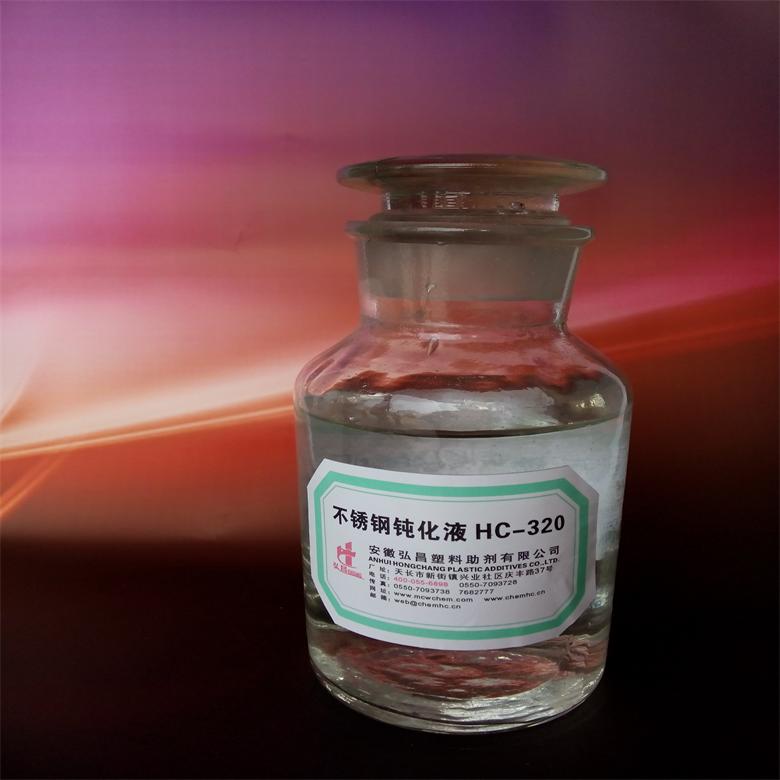
product description
Passivation: After the metal is treated with an oxidizing medium, the corrosion rate is significantly lower than that before the original treatment, which is called the purification of the metal. The passivation mechanism is mainly explained by the film theory, that is, it is believed that passivation is due to the action of the metal and the oxidizing medium, and a very thin, dense, and good covering performance is formed on the metal surface during the action, and can be firmly attached to the metal. Passivation film on the surface. This film exists as a separate phase, usually a compound of oxygen and metal. It plays the role of completely separating the metal from the corrosive medium, preventing the direct contact between the metal and the corrosive medium, so that the metal basically stops dissolving and forms a passive state to prevent corrosion.
Applicable materials
Compatible with all 200 and 300 series stainless steels. Such as: 316, 317, 201, 202, 204, 303, 301, 302, 304, 305, 309, 310, 321, 347, XM7, XM15J1. It can pass the standard neutral salt spray test for 48-1200 hours.
Attachment: Stainless iron (martensitic, ferritic stainless steel, 400 series stainless steel) has special passivation solution.
Scope of application
This product is mainly suitable for small and medium-sized stainless steel workpieces with large batches, large output and easy soaking; such as screws, communication equipment parts, stainless steel precision castings, small furniture, food machinery, digital electrical components, hardware parts, etc.
Instructions:
This product is used in stock solution at room temperature. Considering the climate characteristics of northern my country, the temperature should be kept above 15°C when used in winter;
According to the processing conditions of the workpiece, the degreasing and mechanical polishing parts should be dewaxed first, and then rinsed after cleaning to ensure that the surface is clean; pickling or activation, all parts that have undergone machining processes such as welding, rolling or heat treatment should be pickled before passivation. (3~10% dilute sulfuric acid can be used) pickling for 2~5 minutes (the specific time can be controlled by yourself, mainly to remove the oxide scale and expose the metal matrix), or directly use our company's rare acid for pickling;
All workpieces that have been electropolished, chemically polished, mechanically ground and polished, with clean surfaces, no oxide scale and rust spots, can be passivated directly.
Immerse the clean workpiece in this product for more than 30 minutes (usually 30 minutes, for those with higher requirements, the passivation time can be appropriately extended, the longer the time, the more complete the corresponding passivation film), take out and rinse with clean water, * *** Neutralize and prevent rust with sodium hydroxide.
Product advantages
1) The salt spray resistance test can be improved by 5-20 times.
2) It can be used repeatedly and the cost is low.
3) Does not change the color of the workpiece and does not change the size of the workpiece.
4) Tested by the national standard blue dot method, no blue dots appear.
5) The stainless steel passivation solution is easy to use and can be soaked at room temperature
Operating procedures
conventional process
Degreasing - rinsing - activation - rinsing - passivation - water rinsing - neutralization - rinsing - drying or drying,
As shown below:
2.jpg
Process description
1. Degreasing and degreasing, if you are sure that there is no oil stain on the surface of the workpiece, you can omit this step. Use 3-5% alkaline solution to remove oil stains.
2. Activation, soaking time is 2-5 minutes, if you are sure that there is no rust, welding spot and other impurities on the surface of the workpiece (such as the workpiece just polished), you can omit this step.
3. Passivation must go through the process. The soaking time is 30 minutes. The longer the time, the more complete the passivation film is. The time can also be controlled according to the size of the work.
4. Neutralization, soaking time is 3 minutes, if the surface shape is simple, there is no thread, and there is no blind hole, this step can be omitted.
5. This product is used at room temperature in stock solution. Considering the climate characteristics of northern my country, the temperature should be kept greater than 15 ℃ when used in winter;
Instructions
Stainless steel small parts can be soaked in a container, and can be soaked for about 20-40 minutes according to different requirements of users (for example, the time can be appropriately extended when the oxide layer is thick and there is a lot of dirt), and then the treated parts are removed and the rust is removed with a nylon brush, and water is used. Just rinse it clean. For larger equipment, in order to ensure the quality of cleaning and passivation and save passivation materials, the pump can be used for circulating spraying. (Note: The final rinse with clean water must be clean to ensure that there is no residual pickling passivation solution)
Precautions:
(1) Cleaning tank: The working tank is made of glass fiber reinforced plastic, stainless steel or plastic products, and PVC plastic lining is required when carbon steel is made.
(2) Addition and maintenance of tank liquid: regularly clean up the sundries and residues in the tank (to prevent sundries and residues from reducing the concentration of the tank liquid). When the cleaning ability of the working fluid decreases, it can be resumed by adding new fluid (PH<2).
(3) Neutralize with quicklime or calcium carbide, adjust the pH of the solution to 7, separate the sediment, and discharge the waste liquid according to the standard.
(4) Equipped with protective equipment such as rubber gloves and goggles during operation; the skin should not come into contact with this product, and if it is accidentally touched, rinse it with clean water; the tools used should be corrosion-resistant stainless steel or plastic products.
(5) It must be operated outdoors or indoors with good ventilation.
- Close This Page
- Browse:



